
Often, when spring planting starts slow, it’s not hard to catch up once farmers can find a little traction with favorable weather. And 2018 was no exception – with some warmer weather, they made significant progress.
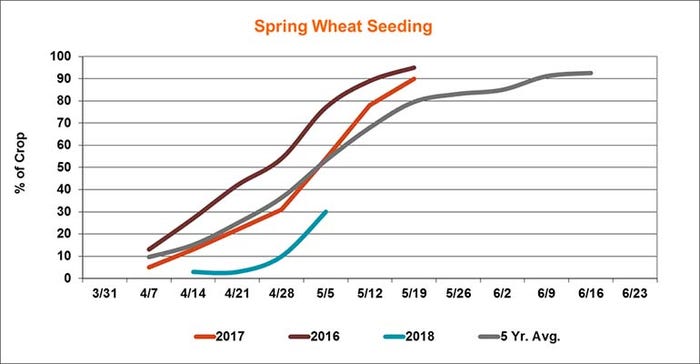
For corn planting, analysts had expected USDA’s latest Crop Progress report move from 17% complete the week prior to a total of 37% complete on May 6. The actual report came in a bit higher than that, estimating 39% of the U.S. crop is now in the ground – still behind the five-year average of 44%, but certainly closing the gap.
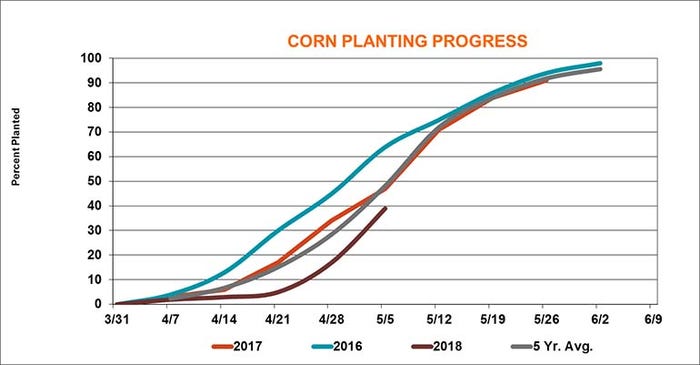
Five states have vaulted across the halfway mark, most notably Illinois, which moved from 32% a week ago to 74%. A few other Midwestern states made a big leap forward this past week, including Indiana (from 8% to 42%), Iowa (from 17% to 40%) and Nebraska (from 17% to 42%). OF the top 18 corn-producing states, the Dakotas are furthest behind, but South Dakota (6%) and North Dakota (7%) are finally starting to see planters rolling.
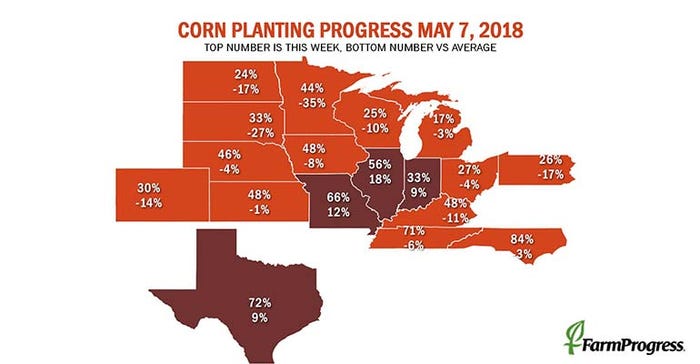
The percentage of corn emerged moved ahead from 3% a week ago to 8%. That’s still moderately behind last year’s pace of 14% and the five-year average of 14%. But as corn planting saw a big uptick this past week, so should crop emergence in another week or two.
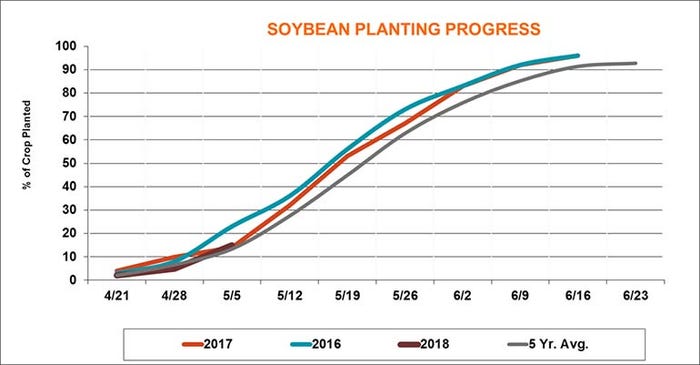
Soybean planting has reached 15% completion as of May 6, which is exactly in line with trade expectations, and a bit ahead of last year’s pace and the five-year average, both at 13%. Louisiana (64%), Mississippi (53%), Arkansas (40%), Illinois (29%) and Indiana (23%) are the furthest along at this time.
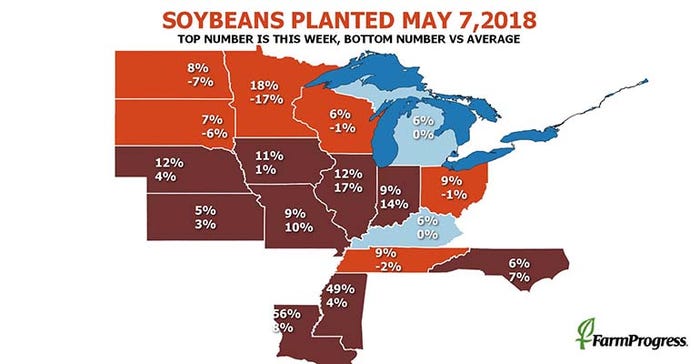
Physiologically, 33% of the 2017/18 winter wheat crop has reached heading, compared to 49% last year and 41% for the five-year average.
Crop condition, meantime, improved slightly, moving from 33% in good-to-excellent condition a week ago to 34%. Trade analysts were expecting no changes. But Bryce Knorr, Farm Futures senior grain market analyst, says that while crop conditions rated good or excellent improved, overall ratings were mixed.
“My yield estimate based on the national rating edged a tenth of a bushel per acre higher, while state-by-state projections were slightly lower, leaving projected yields between 43.4 and 45.2 bpa,” he says. “The crop still looks like it could come in around 1.178 billion in Thursday’s USDA report, with all-wheat production at 1.796 billion.”
Trade analysts were also expecting a big more progress on the 2018 spring wheat crop, estimating 33% of the crop is now in the ground. USDA begs to differ, only marking progress of 30%. Either way, it’s well behind last year’s pace and the five-year average, both at 51%. Just 4% of the crop is emerged, versus a 22% five-year average.
Here’s some other crop progress of note:
Barley – 42% planted (59% five-year average)
Oats – 56% planted (74% five-year average)
Sugarbeets – 66% planted (63% five-year average)
Sorghum – 29% planted (29% five-year average)
Cotton – 20% planted (20% five-year average)
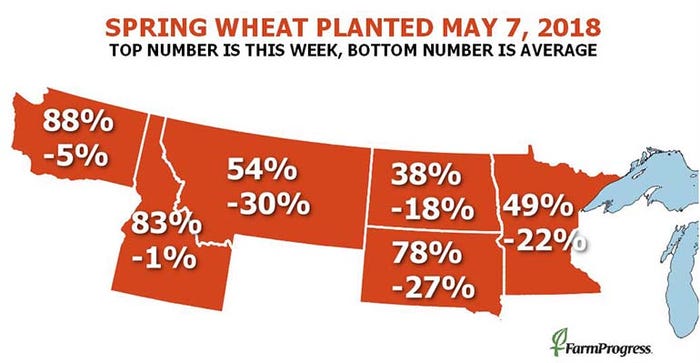
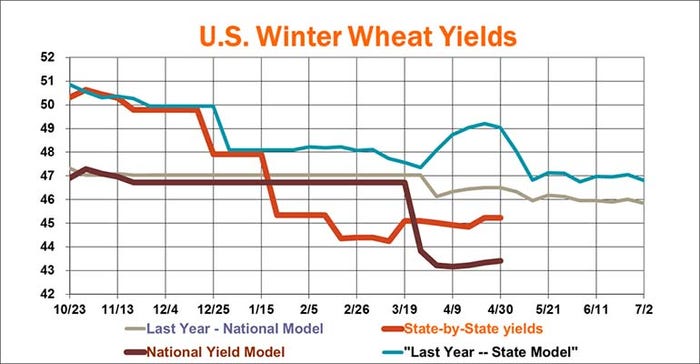
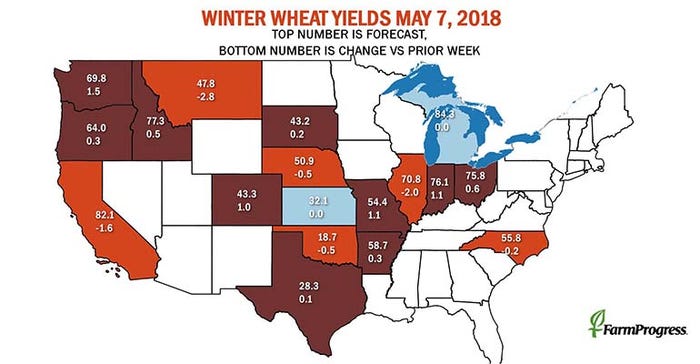
About the Author(s)
You May Also Like






